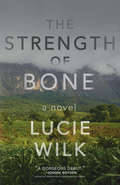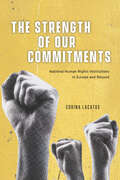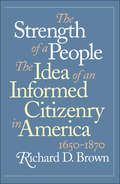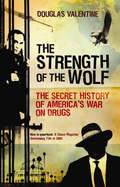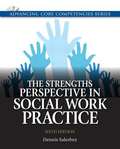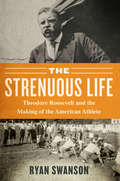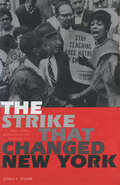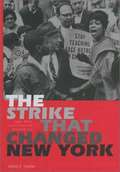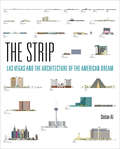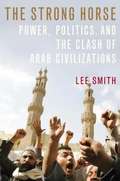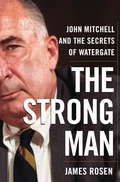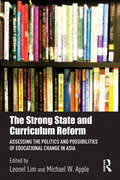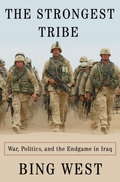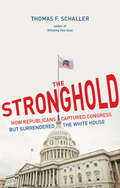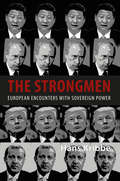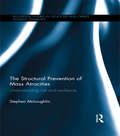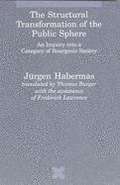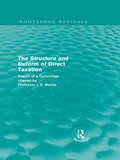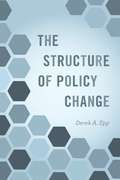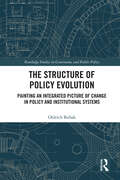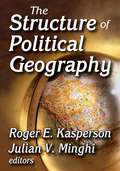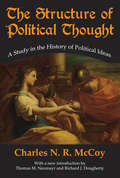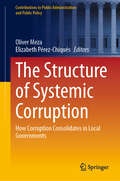- Table View
- List View
The Strength of Bone
by Lucie WilkAn Amazon.ca Best Book of 2013: Top 100/Editors' Pick"A gorgeous debut."-JOSEPH BOYDEN, author of Through Black Spruce and The OrendaAt the hospital in Blantyre, Malawi, Bryce is learning to predict the worst. Racing heart: infection, probably malaria. He'll send Iris for saline. Shortness of breath? TB. Another patient rolled to the ward. And the round swellings, the rashes with dimpled centres, the small rough patches on a boy's foot? HIV. Iris will make him comfortable. They'll move on.Then there will be sleeplessness, rationed energy, a censuring of hope: the doctor's disease. Iris sees that one all the time.Henry Bryce has come to Blantyre to work off the grief he feels for his old life, but he can't adjust to the hopelessness that surrounds him. He relies increasingly upon Sister Iris's steady presence. Yet it's not until an accident brings them both to a village outpost that Bryce realizes the personal sacrifices Iris has made for her medical training, or that Iris in turn comes to fathom the depth of Henry's loss.The Strength of Bone is the story of a Western doctor, a Malawian nurse, and the crises that push both of them to the brink of collapse. With biting emotion and a pathological eye for detail, novelist and medical doctor Lucie Wilk demonstrates how, in a place where knowledge can frustrate as often as it heals, true strength requires the flexibility to let go.Advance Praise for The Strength of Bone"In supple, beautiful prose, Lucie Wilk recounts a doctor's struggle with technology and faith, and with the mysteries of death and love ... The Strength of Bone is an extraordinary look at the clash of worlds."-ANNABEL LYON, author of The Golden Mean and The Sweet GirlLucie Wilk grew up in Toronto and completed her medical training in Vancouver. Her short fiction has been nominated for the McClelland & Stewart Journey Prize Anthology, longlisted for a CBC Canada Writes literary prize, and has appeared in Descant, Prairie Fire and Shortfire Press. She is working toward an MFA in Creative Writing at the University of British Columbia. She practices medicine and lives with her husband and two children in London, UK.
The Strength of Our Commitments: National Human Rights Institutions in Europe and Beyond (Chicago Series on International and Domestic Institutions)
by Corina LacatusA deep dive into the mechanics of national human rights institutions and the forces that make or break their success. In the years since World War II, the endeavor to promote human rights has gained momentum and become increasingly important within international relations. Yet these efforts often run into serious problems of enforcement. Many countries formed national human rights institutions (NHRIs) with independent mandates to support and monitor government compliance with international human rights law. Be they commissions, ombudsmen, or tribunals, these institutions vary in their power and impact. For this book, Corina Lacatus surveyed NHRIs in Europe and around the world to determine their effectiveness and explain why some succeed while others fail. The Strength of Our Commitments explores the relationship between the domestic and international support an institution receives and its ability to secure resources, credibility, and tangibly improve human rights conditions. Lacatus shows that NHRIs can be models of resilience, even in the face of opposition from political elites. Although their impact on human rights is difficult to measure, The Strength of Our Commitments shows how NHRIs’ strength comes from clearly defined formal powers, strong institutional leadership, and independence from political interference.
The Strength of a People
by Richard D. BrownThomas Jefferson's conviction that the health of the nation's democracy would depend on the existence of an informed citizenry has been a cornerstone of our political culture since the inception of the American republic. Even today's debates over education reform and the need to be competitive in a technologically advanced, global economy are rooted in the idea that the education of rising generations is crucial to the nation's future. In this book, Richard Brown traces the development of the ideal of an informed citizenry in the seventeenth through nineteenth centuries and assesses its continuing influence and changing meaning. Although the concept had some antecedents in Europe, the full articulation of the ideal relationship between citizenship and knowledge came during the era of the American Revolution. The founding fathers believed that the First Amendment's guarantee of freedom of the press, religion, speech, and assembly would foster an informed citizenry. According to Brown, many of the fundamental institutions of American democracy and society, including political parties, public education, the media, and even the postal system, have enjoyed wide government support precisely because they have been identified as vital for the creation and maintenance of an informed populace.
The Strength of the Wolf
by Douglas ValentineVoted Outstanding Academic Title in 2004 by Choice.The Strength of the Wolf is the first complete history of the Federal Bureau of Narcotics (FBN), which existed from 1930 until its wrenching termination in 1968. The most successful federal law enforcement agency ever, the FBN was populated by some of the most amazing characters in American history, many of whom the author interviewed for this book. Working as undercover agents and with mercenary informers around the globe, these freewheeling "case-making" agents penetrated the Mafia and the French connection, breaking all the rules in the process, and uncovering the Establishment's ties to organized crime. Targeted by the FBI and the CIA, the case-makers were, ironically, victims of their own fabulous success in hunting down society's predators. An incredible, never-before-told story, The Strength of the Wolf provides a new, exciting, and revealing look at an important chapter in American history.From the Trade Paperback edition.
The Strengths Perspective In Social Work Practice (Advancing Core Competencies)
by Dennis SaleebeyThe Strengths Perspective in Social Work Practice, 6/e, presents both conceptual and practical elements of the strengths perspective - from learning about and practicing the strengths perspective to using the strengths perspective with older adults, the chronically ill, and substance abusers. <p><p> Many of the chapters- address recent events —from the tragic shooting in Tucson to the uprisings in the Middle East. Each chapter begins with a section from an expert in the field.
The Strengths Perspective in Social Work Practice
by Dennis SaleebeyA book about working in counseling and case management with the mentally ill
The Strenuous Life: Theodore Roosevelt and the Making of the American Athlete
by Ryan Swanson&“It seemed as if Theodore Roosevelt&’s biographers had closed the book on his life story. But Ryan Swanson has uncovered an untold chapter&” (Johnny Smith, coauthor of Blood Brothers: The Fatal Friendship between Muhammad Ali and Malcolm X). Crippling asthma, a frail build, and grossly myopic eyesight: these were the ailments that plagued Teddy Roosevelt as a child. In adulthood, he was diagnosed with a potentially fatal heart condition and was told never to exert himself again. Roosevelt&’s body was his weakness, the one hill he could never fully conquer—and as a result he developed what would become a lifelong obsession with athletics that he carried with him into his presidency. As President of the United States, Roosevelt boxed, practiced Ju-Jitsu, played tennis nearly every day, and frequently invited athletes and teams to the White House. It was during his administration that America saw baseball&’s first ever World Series; interscholastic sports began; and schools began to place an emphasis on physical education. In addition, the NCAA formed, and the United States hosted the Olympic Games for the first time. From a prize-winning historian, this book shows how Roosevelt fought desperately (and sometimes successfully) to shape American athletics in accordance with his imperialistic view of the world. It reveals that, in one way or another, we can trace our fanaticism for fitness and sports directly back to the twenty-sixth president and his relentless pursuit of &“The Strenuous Life.&” &“Essential reading for anyone who cares about the history of sports in America.&” —Michael Kazin, author of War against War: The American Fight for Peace, 1914–1918
The Strike That Changed New York: Blacks, Whites and the Ocean Hill-Brownsville Crisis
by Jerald E. Podair&“[This] admirably balanced book will most likely stand as the definitive account of the Ocean Hill-Brownsville crisis for some time . . . engrossing.&” —New York History Winner of the Allan Nevins Prize awarded by the Society of American Historians On May 9, 1968, junior high school teacher Fred Nauman received a letter that would change the history of New York City. It informed him that he had been fired from his job. Eighteen other educators in the Ocean Hill–Brownsville area of Brooklyn received similar letters that day. The dismissed educators were white. The local school board that fired them was predominantly African-American. The crisis that the firings provoked became the most racially divisive moment in the city in more than a century, sparking three teachers&’ strikes and increasingly angry confrontations between black and white New Yorkers at bargaining tables, on picket lines, and in the streets. This superb book revisits the Ocean Hill–Brownsville crisis—a watershed in modern New York City race relations. Jerald E. Podair connects the conflict with the sociocultural history of the city and explores its legacy. The book is a powerful, sobering tale of racial misunderstanding and fear, and a New York story with national implications. &“Deftly weaves a complicated story about class and race, labor and civil rights…There are no faultless heroes or thoroughly evil villains here—only human beings struggling to make sense of their world and achieve justice as they understand it.&” —Choice &“Compelling.&” —Washington Monthly
The Strike that Changed New York: Blacks, Whites, and The Ocean Hill-brownsville Crisis
by Jerald E. PodairFred Nauman received a letter that would change the history of New York. The letter was informing him that he had been fired from his job.
The Strip: Las Vegas and the Architecture of the American Dream (The\mit Press Ser.)
by Stefan AlThe transformations of the Strip—from the fake Wild West to neon signs twenty stories high to “starchitecture”—and how they mirror America itself.The Las Vegas Strip has impersonated the Wild West, with saloon doors and wagon wheels; it has decked itself out in midcentury modern sleekness. It has illuminated itself with twenty-story-high neon signs, then junked them. After that came Disney-like theme parks featuring castles and pirates, followed by replicas of Venetian canals, New York skyscrapers, and the Eiffel Tower. (It might be noted that forty-two million people visited Las Vegas in 2015—ten million more than visited the real Paris.) More recently, the Strip decided to get classy, with casinos designed by famous architects and zillion-dollar collections of art. Las Vegas became the “implosion capital of the world” as developers, driven by competition, got rid of the old to make way for the new—offering a non-metaphorical definition of “creative destruction.” In The Strip, Stefan Al examines the many transformations of the Las Vegas Strip, arguing that they mirror transformations in America itself. The Strip is not, as popularly supposed, a display of architectural freaks but representative of architectural trends and a record of social, cultural, and economic change. Al tells two parallel stories. He describes the feverish competition of Las Vegas developers to build the snazziest, most tourist-grabbing casinos and resorts—with a cast of characters including the mobster Bugsy Siegel, the eccentric billionaire Howard Hughes, and the would-be political kingmaker Sheldon Adelson. And he views the Strip in a larger social context, showing that it has not only reflected trends but also magnified them and sometimes even initiated them. Generously illustrated with stunning color images throughout, The Strip traces the many metamorphoses of a city that offers a vivid projection of the American dream.
The Strong Horse: Power, Politics, and the Clash of Arab Civilizations
by Lee SmithIn a provocative, timely book, a noted journalist and expert on Arab-American affairs overturns long-held Western myths about the Arab world, and offers a doctrine to help the United States correct its assumptions concerning the region. Wanting to know why September 11 happened, journalist Lee Smith moved to Cairo. There, he discovered that the standard explanation-a clash of East and West led to the attacks-was simply not the case. As Smith outlines inThe Strong Horse, the problems of the Middle East have little to do with Israel, the United States, or the West in general. The strife exists within the Arab world itself. Through clear-eyed analysis, Smith explodes the many myths permeating Americans' understanding of the Arab world: colonialism spurred the region's ongoing turmoil; Arab liberalism is waiting for U. S. intervention; technology and democracy can be transforming. In response to these untruths, Smith offers what he terms the “Strong Horse Doctrine”-that Arabs want to align themselves with strength, power, and violence. Given America's ongoing interest in the Middle East, Smith says America needs to be the strong horse in order to reclaim its role there, and only by understanding the nature of the region's ancient conflict can we succeed.
The Strong Man: John Mitchell and the Secrets of Watergate
by James RosenRosen (a Washington correspondent for Fox News) presents a biography of Richard Nixon's Attorney General John Mitchell, whose conviction in the Watergate cover-up trial provided the dubious honor of being the highest-ranking US government official to have to serve time in prison. Rosen addresses a host of previously unanswered questions, including whether Mitchell ordered the Watergate break-in, Mitchell's role in the SEC case against fugitive financier Robert Vesco, the role of the Central Intelligence Agency in Watergate, the response of Mitchell to the discovery that the Joint Chiefs of Staff were spying on Nixon and Henry Kissinger, Mitchell's activities concerning school desegregation and antitrust laws, and Mitchell's response to Kent State. Also covered is Mitchell's involvement in cases concerning Daniel Ellsberg, Lt. William Calley, Jimmy Hoffa, Robert Vesco, Abe Fortas, Clement Haynsworth, John Lennon, the Berrigan Brothers, the Black Panthers, and ITT. In the end, Mitchell is portrayed as a man who repeatedly served as a restraining influence on the darker urges of Richard Nixon and as a victim of many unfair charges concerning the Watergate affair, although some unpunished crimes are also noted, such as his illegal intervention with South Vietnamese officials at the 1968 Paris peace talks, his false testimony before the Senate concerning the ITT case, and his false statements to the FBI agents investigating the 1969-71 Kissinger wiretaps. Annotation ©2008 Book News, Inc. , Portland, OR (booknews. com)
The Strong State and Curriculum Reform: Assessing the politics and possibilities of educational change in Asia (Routledge Research in Education Policy and Politics)
by Michael W. Apple Leonel LimAs Asian education systems increasingly take on a stronger presence on the global educational landscape, of special interest is an understanding of the ways in which many of these states direct their schools towards higher achievement. What is missing, however, are accounts that take seriously the particular construction of the strong, developmental state witnessed across many Asian societies, and that seek to understand the politics and possibilities of curriculum change vis a vis precisely the dominance of such a state. By engaging in analyses based on some of the best current social and cultural theories, and by illuminating the interactions among various state and non-state pedagogic agents, the chapters in this volume account for the complex post-colonial, historical and cultural consciousnesses that many Asian states and societies experience. At a time when much of the educational politics in Asia remains in a state of transition and as many of these states seek out through the curriculum new forms of social control and novel bases of political legitimacy, such a volume offers enduring insights into the real if not also always relative autonomy that schools and communities maintain in countering the hegemonic presence of strong states.
The Strongest Tribe: War, Politics, and the Endgame in Iraq
by Bing WestFrom one of the most respected combat reporters in America comes a gripping battlefield history of how the U. S. military corrected its mistakes in Iraq and opened a path to victory.
The Stronghold
by Thomas F. SchallerOnce the party of presidents, the GOP in recent elections has failed to pull together convincing national majorities. Republicans have lost four of the last six presidential races and lost the popular vote in five of the last six. In their lone victory, the party incumbent won--during wartime--by the slimmest of margins. In this fascinating and important book, Thomas Schaller examines national Republican politics since President Ronald Reagan left office in 1989. From Newt Gingrich's ascent to Speaker of the House through the defeat of Mitt Romney in 2012, Schaller traces the Republican Party's institutional transformation and its broad consequences, not only for Republicans but also for America. Gingrich's "Contract with America" set in motion a vicious cycle, Schaller contends: as the GOP became more conservative, it became more Congress-centered, and as its congressional wing grew more powerful, the party grew more conservative. This dangerous loop, unless broken, may signal a future of increasing radicalization, dependency on a shrinking pool of voters, and less viability as a true national party. In a thought-provoking conclusion, the author discusses repercussions of the GOP decline, among them political polarization and the paralysis of the federal government.
The Strongmen: European Encounters with Sovereign Power
by Hans KribbeSeven decades after the liberation of Europe, the strongmen of global politics are back, dominating not only the headlines but international relations, the global economy, and the world's security. The strongman has a style and strategy of leadership that is anathema to the liberal democratic norms and practices of Europe. He (it is always he) challenges principles of consensus and collaboration, willingly tears up trade agreements, invades territory, and seeks to provoke and disrupt the status quo in order to achieve advantage. Such behaviour confounds and frustrates his counterparts abroad and yet, as this book shows, it can be anticipated, even understood, offering hope for dealing with and neutralizing it. Hans Kribbe draws on a range of political ideas to provide insight into the strongman's seemingly irrational and idiosyncratic behaviour and to better understand how he wields power and to what end. With the world's largest economies, including Europe's key ally, as well as strategic neighbouring states controlled by strongmen - Xi Jinping, Donald Trump, Vladimir Putin, and Recep Tayyip Erdogan - Europe must learn to adapt and respond if it is to beat them at their own game.
The Structural Prevention of Mass Atrocities: Understanding Risk and Resilience (Routledge Studies in Genocide and Crimes against Humanity)
by Stephen McLoughlinThis book offers a different approach to the structural prevention of mass atrocities. It investigates the conditions that enable vulnerable countries to prevent the perpetration of such violence. Structural prevention is commonly framed as the identifying and ameliorating of the ‘root causes’ of violent conflict, a process which typically involves international actors determining what these root causes are, and what the best courses of action are to deal with them. This overlooks why mass atrocities do not occur in countries that contain the presence of root causes. In fact, very little research has been conducted on what the causes of peace and stability are, particularly in relatively countries located in regions marred by civil war and mass atrocities. To better understand how such vulnerable countries prevent the commission of mass atrocities, this book proposes an analytical framework which enables not only an understanding of risk which arises from the presence of root causes, but also of the factors that build resilience in countries, and consequently mitigate and manage such risk. Using this framework, three countries – Botswana, Zambia and Tanzania, are analysed to account for their long term stability despite their location in neighbourhoods characterised by decades of civil war, ethnic repression and mass atrocities. This work is a significant contribution to the field of genocide studies and crimes against humanity and will be of interest to students and scholars alike.
The Structural Transformation Of The Public Sphere: An Inquiry Into A Category Of Bourgeois Society (Studies In Contemporary German Social Thought)
by Jurgen Habermas Thomas BurgerThis is Jurgen Habermas's most concrete historical-sociological book and one of the key contributions to political thought in the postwar period. It will be a revelation to those who have known Habermas only through his theoretical writing to find his later interests in problems of legitimation and communication foreshadowed in this lucid study of the origins, nature, and evolution of public opinion in democratic societies.
The Structure and Reform of Direct Taxation (Routledge Revivals)
by James E. MeadeFirst published in 1978, The Structure and Reform of Direct Taxation presents the full findings and recommendations of the ‘Meade’ committee set up by The Institute for Fiscal Studies. It represents the most important contemporary examination of the structure of UK taxation and direct taxation systems in general. The results of two years’ intensive research and discussion by this independent committee are presented as a report under the joint authorship of an outstanding team of tax experts. The committee brought together professional practitioners-lawyers, accountants and taxation administrators-and academic specialists in fiscal studies, and here provides a unique review of direct taxation which is comprehensive, singularly original and full of good sense.The book begins with a return to first principles, restates the objectives of a good tax system and analyses existing structures. It goes on to examine the feasibility of basic reforms which would allow the system to become more straightforward in operation and which would base taxation on what individuals take out of the economy rather than on what they put into it.
The Structure of Policy Change
by Derek A. EppWhen the Soviet Union launched Sputnik, the Red Scare seized the American public. While President Eisenhower cautioned restraint, his hand was forced, and NASA’s budget had increased five thousand percent over its pre-Sputnik levels by the time President Kennedy proposed landing a man on the moon. Spending on the space race is in no way unique; Almost every policy area has its own Sputnik-type story, where waves of popular support for an idea (or disillusionment with a previous one) created new political priorities, resulting in dramatic changes to the budget or compelling agencies to respond quickly with little knowledge or preparation. Is this instability an inherent feature of the policy process, or is it possible for an agency to deal with problems in a way that insulates it from swings in public opinion and thus imposes some stability on the decision making process? Derek A. Epp argues that some agencies can indeed do that and that instability is at least partially a function of poor institutional design. While it is inherently more challenging to maintain stability around complex problems like immigration or climate change, the deliberative process itself can affect the degree of stability around an issue. Epp looks at whether agencies follow a deliberative model for decision making, in which policies are developed by means of debate among a small group of policymakers, or a collective model, in which the opinions of many people are aggregated, as with the stock market. He argues that, in many instances, the collective model produces more informed and stable policy outcomes that can be adapted more readily to new information and changing public priorities.
The Structure of Policy Evolution: Painting an Integrated Picture of Change in Policy and Institutional Systems (Routledge Studies in Governance and Public Policy)
by Oldrich BubakThis book advances novel tools for the study, analysis, and development of public policy, essential in a world of growing diversity, complexity, and accelerating change. Inspired by research in technology innovation, the book brings its forward applications into the studies of policy and institutional systems, answering, among others, the disciplinary need for a common model of change. Relating together the dynamics and the structure of policy evolution, the unified approach offers scholars important new insights into the logics and direction of policy development while advancing policy practitioners’ capacity for forecasting and optimizing designs. Analyzing social and labour market policy development across two model jurisdictions, the United Kingdom and Denmark, it substantiates the new approach while demonstrating its significance to the study of welfare modernization and to policy scholarship more generally. The book will be of key interest to scholars and students of policy and institutional development, policy analysis, and public administration and management, as well as comparative policy, evolutionary and complexity policy, and social policy and welfare state modernization research.
The Structure of Political Geography
by Julian V. Minghi Roger E. KaspersonThis volume seeks to provide a sense of purpose and order to the study of political geography. The editors devise a conceptual structure for the field, bringing political geography into line with trends in contemporary geography as a whole and with other social sciences. Not only do the selections contain a wide variety of contributions from other fields, but the introductory essays and annotated bibliographies suggest related research. The structure of the book enjoys close parallels in other social sciences.The organization of the book reflects the editors' definitions and structuring of political geography. Part I, ""Heritage,"" includes works that have contributed to the theoretical development of the field. Part II, ""Structure,"" comprises the concern to which political geographers have devoted most of their past attention. Parts III and IV, ""Process"" and ""Behavior,"" form the subject where much future theoretical and practical effort is needed. Part V, ""Environment,"" provides the context in which spatial structure, process, and behavior occur.The Structure of Political Geography includes selections from sociobiology, history, international relations, political economy, political science, social psychology, and sociology. The classics in the field are an essential inclusion since the book would be incomplete without them. The selections in the volume, originally published in 1971, remain useful and pertinent to political geographers of diverse persuasion and to social scientists interested in geographical approaches. The fact that there is a clear focus and conceptual interdependence in political geography is the volume's greatest contribution.
The Structure of Political Thought: A Study in the History of Political Ideas (The\library Of Conservative Thought Ser.)
by Charles McCoyOriginally published in 1963, this classic book is a rethinking of the history of Western political philosophy. Charles N. R. McCoy contrasts classical-medieval principles against the "hypotheses" at the root of modern liberalism and modern conservativism.In Part I, "The Classical Christian Tradition from Plato to Aquinas," the author lays the foundation for a philosophical "structure" capable of producing "constitutional liberty." Part II, "The Modern Theory of Politics from Machiavelli to Marx," attempts to show, beginning with Machiavelli, the reversal and destruction of the pre-modern "structure" postulated in Part I.McCoy stresses the great contributions of Aristotle to political thought found in his more familiar Ethics and Politics, but also includes key insights drawn from Metaphysics and Physics. These contributions are developed and perfected, McCoy argues, by Augustine and Aquinas. Two other important features include McCoy's epistemological insights into Plato's work that will be new to many readers and the author's juxtaposition of traditional natural law with "the modernized theory of natural law." The modern account of autonomous natural law, in McCoy's view, helps explain the totalitarian direction of key aspects of modern political thought. This classic volume on the origins of modern philosophical thought remains a standard in the field.
The Structure of Systemic Corruption: How Corruption Consolidates in Local Governments (Contributions to Public Administration and Public Policy)
by Oliver Meza Elizabeth Pérez-ChiquésThis book presents a series of interconnected studies designed to understand systemic corruption in local governments. Coined as the Corruption Consolidation Framework (CCF), this novel approach elucidates how corruption becomes the rule in formal institutional settings and further consolidates. The CCF analyzes the problem along four dimensions, offering a unique contribution to make sense of a complex problem without oversimplifying the subject. Chapters in the book explore the CCF in case studies conducted across Latin American municipalities in Mexico, Brazil, Chile, and Puerto Rico, however, authors believe the CCF is applicable around the world both in the Global South and in Western countries. The volume is a promising tool for the academic community in the public administration, policy studies, and local government fields. It can also be used in undergraduate and graduate courses on corruption, governance, local governments, and Latin American studies. Finally, it offers a general roadmap to citizens and policymakers about what can be done in cases where corruption has become the rule of the game in local governments. Since the famous book of Klitgaard Corrupt Cities, the world has been waiting for a follow-up on municipal corruption. This collection of LA studies crosses the borders of the continent and makes indispensable reading for students of corruption and local government everywhere -- Alina Mungiu-Pippidi, Professor at LUISS Guido Carli. Author of "The Quest for Good Governance. How Societies Build Control of Corruption" The book fills this gap and takes the reader on an enlightening journey into the world of systemic corruption in municipalities through a collection of well-written chapters with a concept that unifies these cases in a theoretically grounded yet highly applicable framework. -- David Jancsics, Professor at San Diego State University. Author of "Sociology of Corruption: Patterns of Illegal Association in Hungary" Theoretically rich and empirically rigorous, this volume provides a fresh, grounded perspective on the governments residents most often engage. It is a must-read for scholars and practitioners alike. -- Patricia Strach, Professor at Albany, State University of New York. Author of The Politics of Trash: How Governments Used Corruption to Clean Cities, 1890-1929 The framework of corruption consolidation helps explain appropriately how this phenomenon can become the status quo of governance in institutionally weak public administrations. It is a must-read to analyze and understand corruption in the global South. -- Pablo Sanabria-Pulido at Florida Atlantic University.
The Struggle For Democracy
by Edward Greenberg Benjamin PageThe Struggle for Democracy offers students the tools they need to critically analyze our political system and make judgments about how well our government works. Taking a fresh approach to common American government topics, authors Edward Greenberg and Benjamin Page provide an analytical framework for understanding how politics and government work, and encourage students to consider the questions “How democratic are we?” and “Can government do anything well?” In order to boost student engagement with key concepts, the 2016 Elections and Updates Edition incorporates coverage of contemporary issues that dominate today’s headlines, as well as the most up-to-date data.
